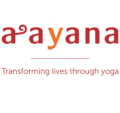
This restorative asana is renowned for its ability to release deep-seated physical and mental tension, making it a cornerstone of a balanced yoga practice.
To practice Happy Baby, begin by lying supine on your mat. With an exhale, gently draw your knees toward your armpits, allowing them to widen comfortably around your torso. Reach your hands to grasp the outer edges of your feet, ensuring your ankles are directly over your knees. Relax your spine entirely onto the floor, letting your tailbone lengthen downward toward the mat. In this supported position, you can surrender the weight of your legs to your arms, creating a gentle traction in the hips and lower back.
The primary physical benefits of this pose are multifaceted. It provides a deep, passive opening for the inner groins, hips, and adductor muscles while creating a soothing compression in the sacrum and lumbar spine. This combination effectively alleviates lower back tightness and improves overall spinal flexibility. Furthermore, the gentle pressure on the sacrum helps to calm the nervous system, shifting the body into a state of “rest and digest.”
Beyond the physical, Ananda Balasana is a powerful practice for the mind. It teaches the art of letting go, both physically and emotionally. The pose encourages introspection and a release of control, making it exceptionally therapeutic for relieving anxiety and quieting a busy mind. The optional gentle rocking from side to side adds a rhythmic, meditative quality, massaging the spine and enhancing the sense of release.
For an optimal Yin experience, hold this pose for 3 to 5 minutes, focusing on deep diaphragmatic breathing. Incorporate Happy Baby into your routine 2-3 times per week to cultivate cumulative benefits in hip mobility and nervous system regulation. It serves as a perfect counter-pose to active, Yang practices and long periods of sitting, offering a pathway to profound physical and emotional balance.
Learn about Yin Yoga Poses > Happy Baby Pose, Seal Pose, Supported Sacrum, Toes stretch, Sphinx Pose, Butterfly Pose, Twisted Roots, Caterpillar Pose, DragonFly Pose, Shoelace Pose, Snail Pose, Swan Pose, Full Saddle Pose, Crescent Pose.
